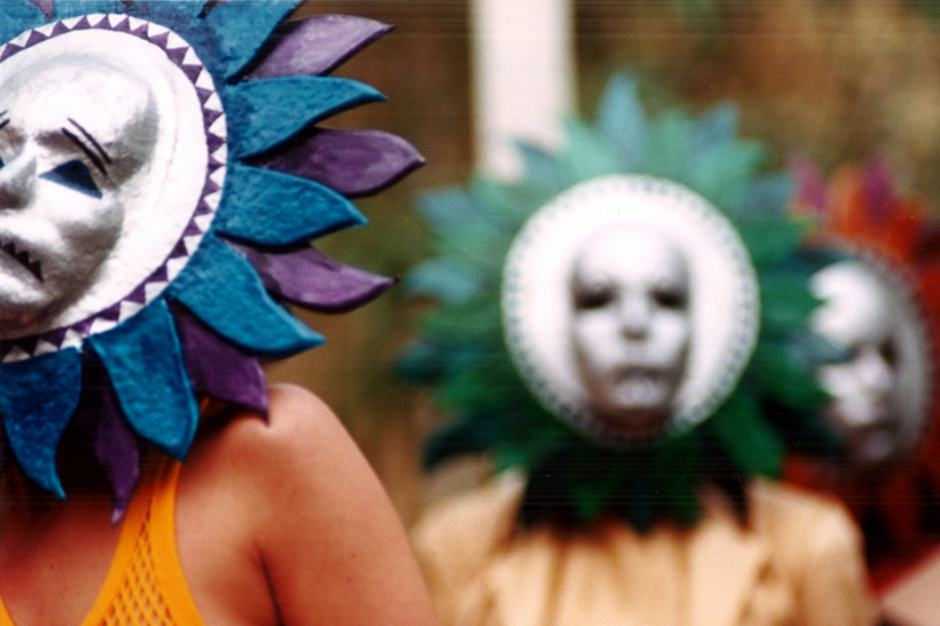The legacy of bands like Frankie Goes to Hollywood, Grace Jones, and Art of Noise actually began more than 100 years ago, with the phrase “Zang Tumb Tuum!”
It comes from the Italian Futurist poet Filippo Marinetti, who employed it as an onomatopoeic war cry, a thunderclap to mark the nerve-jangling era of mechanized death. Luigi Russolo quoted a fragment of the resulting 1912 poem the following year in his manifesto, “The Art of Noises,” which argued the need for a new kind of music, made of roars and sobs and baked earth, capable of expressing the overwhelming din of the modern age. And 70 years after that, record producer Trevor Horn and music journalist Paul Morley seized upon the phrase as the name of their new record label, ZTT.
It was a bold move, but the monster retrospective Zang Tuum Tumb: The Organization of Pop — Music From the First 30 Years of ZTT Records confirms how completely they succeeded in their ambition to create a new kind of pop music — which they called simply “New Pop” — suited for the era of music videos, digital samplers, and the Sony Walkman.
While punk railed against the sham of modern life, Horn and Morley celebrated the transformative potential of studio artifice. Their first signing remains their most iconic: Frankie Goes to Hollywood, those leather-clad provocateurs who queered the mainstream with their No. 1 single, “Relax.” But the ZTT aesthetic extended way further than racy videos and subversive T-shirt slogans. Across records from Propaganda, Grace Jones, the Buggles, and Art of Noise, ZTT engineered a futuristic hybrid of electronic disco, new wave, and the cut-up funk of early hip-hop.
Recalling the label’s origins, Horn tells us: “In the late ’70s, the record business was incredibly successful, but the people that were successful were people like Led Zeppelin, Yes, Elton John — all the big rock stars who are still around now. There was a reaction against all of that with punk rock, but there was also a techno thing starting. You know, Kraftwerk were really the first people, with that album Man Machine. But let’s be honest, it was pretty weedy, German stuff. I’ve never rated German rock’n’roll, but I drive a German car! So I suppose I admired Kraftwerk’s idea. I thought the idea was great. I thought the actual execution of it fell somewhat short of the mark. I was intrigued by the idea of making a fantastic techno-pop group who could really play. And in a way, Frankie were a bit like my version of that techno-pop group that Kraftwerk started off.”
In a break between studio sessions working on Billy Idol’s comeback album (“He’s in great shape,” says Horn), the producer talked us through some of the key songs on The Organization of Pop, an expansive, double-disc collection featuring Frankie, Art of Noise, Grace Jones, Shane MacGowan and Sinead O’Connor, Lisa Stansfield, Adamski, and even “Sex Bomb” crooner Tom Jones. Via acid-house duo 808 State, we even get cameos from Rakim, not to mention Paul’s Boutique beatsmiths the Dust Brothers. Listen to the whole compilation below, read Horn’s breakdown of a few key tracks, and check out the album when it’s released October 15.
Art of Noise, “Beat Box”
Back in 1982, a Fairlight Series II [synthesizer] cost just over 20,000 pounds, which was the price of a terraced house in England at the time. Luckily, I had had a couple of hits, so I was one of the very few people who had one. I think the other two people were Geoff Downes (Horn’s partner in the Buggles, also of Yes and Asia) and Peter Gabriel. The orchestra stab that came with the Fairlight — we called it the “orc” stab, “o-r-c” — was a little bit weedy, but I loved the idea of it. And so very quickly, I recorded new orc stabs with bigger orchestras, because I thought the whole gag of it was so good. The thing about the Fairlight was that it could only play a half-second sample. “Bang!” You know what I mean? A half second’s really quick. I recorded new ones for the Frankies. I was pretty lucky, though, because Geoffrey Downes had bought a Fairlight just before he and I parted, and even though we hadn’t really used it in the studio, I had an idea of what it was capable of. As soon as mine arrived, I couldn’t wait to get started with it. A lot of people didn’t understand what it was, but I knew exactly what it was and how to use it. It probably took everyone else about three or four years to catch up. And so for a few years, I more or less had it to myself.
:audio=0:118254:song:Beat Box:
Frankie Goes to Hollywood, “Relax (New York Mix)”
I spent a Saturday night in Paradise Garage, and I went into the studio the next morning and did that mix of “Relax” with a couple of engineers. It was the only time I ever went [to the Garage]. It was a dance club, but instead of having a normal sound system, you had a massive sound system, more like a rock’n’roll PA system. This would have been ’82 or ’83, and rock bands’ sound systems were becoming modular in order to fit into trucks. The original sound systems that rock bands used were these huge, backwards-facing bass bins, and the lenses they used for the top end didn’t transport very well, didn’t go into a lorry very easily. Whereas the new, modular systems that came in the early ’80s did. That’s when rock started to sound shit, basically. And in Paradise Garage, there was a sound system that was very similar, to me, to one of those old rock PAs. It meant that they could play tricks with the sound in a much more extreme way than anybody else I had ever heard. You know, because they had massive bass bins. That whole thing, “bombing the bass,” the first time I ever heard that was at Paradise Garage, when they take all the top end off and crank the bass up so loud that it could practically split your liver. It made me realize that in the 12-inch mix, you didn’t need to have very much, and it needed to be long. It needed to be much longer than I’d ever thought. You draw it out for a long time before you finally drop the big beat. And so the New York remix of “Relax” was like a great big tease, you know?
The “Sex Mix” was just really… what’s the word for it? Misguided. Because we were so pleased with ourselves. We had a Fairlight locked into a drum machine, and Steve Lipson playing guitar and Andy Richards playing keyboards, and I was changing the drum patterns on the fly, singing this song and shouting the changes. We rehearsed it for about three or four hours, and then we recorded it first-take. The guitar on it was literally the first take. We were so amped up, and we thought it was so cool, that we went and we started jamming. The “Sex Mix” is basically us jamming on it for 15 minutes after we recorded the single, and then I added some obscene noises to it. We got so many complaints we had to withdraw it. But in the end, what happened to “Relax” is that all the different mixes of it started to sell. It was just groping to try and find the right formula.
:audio=0:118252:song:Relax (New York Mix):
Grace Jones, “Slave to the Rhythm”
We did a whole album of that song. By that point, I was quite interested in the idea of the different ways that you could do the same song. We didn’t just remix it, we rewrote it as well. But I loved remixes the first time I heard them. I was really lucky that in the ’70s, I lived in a house where there was an Australian guy who was a big fan of dub reggae. So when it came to remixing, I knew a lot of tricks, because I had listened to a lot of his records. Any tricks that I used in my remixes I stole from dub reggae.
:audio=0:118250:song:Slave To The Rhythm:
Propaganda, “Dr. Mabuse (Abuse)”
Because I was such a big admirer of Kraftwerk, we were intrigued by the idea of signing a German band. Initially, when I heard Propaganda, they were like a punk band. Then they got a new member, Michael Mertens, who was a classical musician, and suddenly it changed. With Propaganda, I only produced the first single, “Dr. Mabuse,” and then Steve Lipson did the rest of the album, although I was the executive producer. I think it’s where Steve really came into his own as a producer. Did a terrific job. Had Propaganda been a little bit more organized, it probably would have done even better than it did. But it certainly made it all around the world. I remember Quincy Jones phoning me up about it. There’s a lot of Propaganda on Bad, loads of it.
:audio=0:118255:song:Dr. Mabuse (Abuse):
808 State, “Pacific State (Justin Strauss 0101 Mix)”
The first track of 808 State that I heard was “Pacific State,” and I loved it. I didn’t love it for any other reason than that I thought it was a particularly beautiful tune. [Singing the hook] “Da-da-daa, da da-da-da…” It’s a lovely tune! And the way the rhythms sit underneath, and the harmony, I really like it! I went to see them play, and I realized that nobody in the major record labels got it at all. They didn’t get it. You had to hear that music live, loud, in a club to understand it. Hearing it from a small speaker, away from this culture, it didn’t really work very well.
:audio=0:118253:song:Pacific (Justin Strauss 0101 Mix):
Stream Zang Tuum Tumb: The Organization of Pop — Music From the First 30 Years of ZTT Records in full:
:audio=0:118251:playlist:Various Artists, The Organization of Pop:





